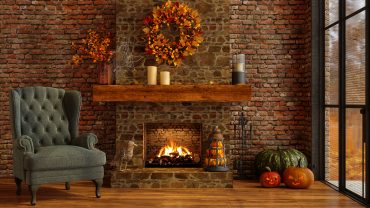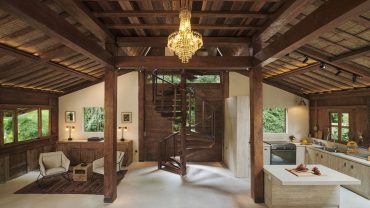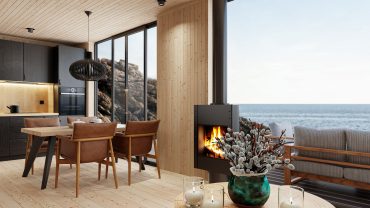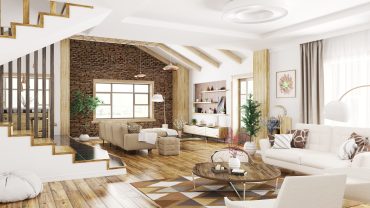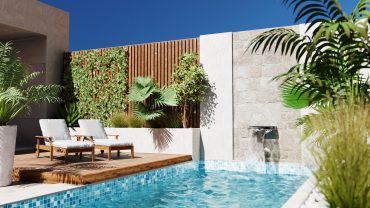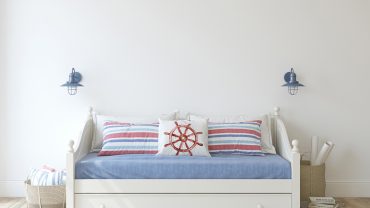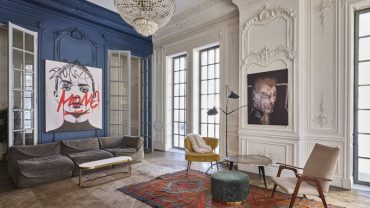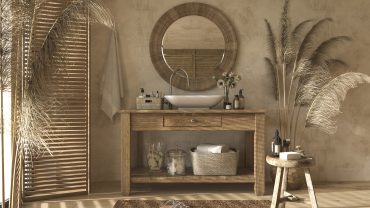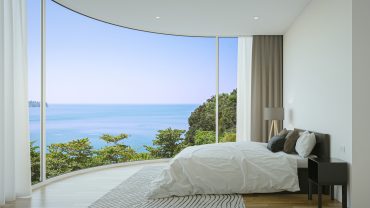While the origins of Georgian house interior design stretch back over three hundred years, its fundamental principles and timeless appeal has the remarkable capability to influence contemporary spaces.
This renowned design style is distinguished by its integration of architecture, furniture, and decorative arts, all working in unison to create interiors that are both luxurious and functional. The essence of Georgian interior design lies in its ability to blend the opulence of the past with the practicalities of the present.
So whether you’re renovating an old country pile, or you want to add the essence of elegance to a modern apartment, Georgian interior decor may be just what you’re looking for.
A Short History of Georgian Interiors

The Circus, Bath (Credit: joe daniel price via Getty Images)
Tracing its origins to the Georgian period in Britain, Georgian interior design was shaped by a range of influences. These included the classical proportions of ancient Rome and Greece, as well as the opulence of Baroque and the refinement of Rococo.
This era witnessed the rise of the middle classes and growing interest in archaeology and the classical past, which profoundly influenced architectural and interior design at the time. The style flourished under the reigns of the kings of the House of Hanover, spanning from 1714 when King George I ascended to the throne, to the death of King William IV in 1837. It reflected a societal shift towards a greater emphasis on comfort, luxury, and the arts.
Over time, Georgian house interior design took on elements of Palladianism and Neoclassical design. The integration of these styles, coupled with the influence of Eastern cultures seen in Chinoiserie, underscores the eclectic yet cohesive nature of Georgian interior decor.
Some of the most pre-eminent examples of Georgian architecture are the Circus, and the Royal Crescent in Bath, and Merrion Square and Fitzwilliam Square on the south side of Dublin. In the USA, Colonial Williamsburg in Virginia is home to numerous examples of Georgian interior design.
Georgian House Interior Style: The Key Principles

Georgian style living space (Credit: Andreas von Einsiedel via Getty Images)
When we ask ‘what is Georgian interior design,’ there are a number of overarching principles such as order, symmetry, balance, and proportion. These core values, combined with a sophisticated yet disciplined approach to design, are reflected in the layout of rooms, the arrangement of furniture, and the design of individual elements, from windows and doors to fireplaces and staircases.
Natural Materials
Georgian interior design predominantly features natural materials, such as wood, stone, and plaster, which are essential for creating its warmth and texture. Mahogany, oak, and walnut are commonly used in furniture, while marble and local stones were used for fireplaces and flooring. These materials are not only chosen for their aesthetic appeal but also for their durability and ability to age gracefully.
Classic Colours
The Georgian colour palette includes the use of pastel shades – pea green, pink and mauve – which were characteristic of the early Georgian period, reflecting the influence of Rococo’s light and airy aesthetics. As the era progressed, especially into the late period (often associated with the Regency era), designers of Georgian interiors shifted towards stronger, more vibrant colours. This included deep reds, blues, and greens, influenced by the growing interest in neoclassicism and the discovery of Pompeian frescoes, which reintroduced bold colours into interior design.
Comfort & Functionality
Despite its elegant – almost regal – appearance, Georgian interior decor places a strong emphasis on comfort and functionality. Rooms are designed with daily life in mind, featuring comfortable furniture and practical layouts. This approach ensures that spaces are not only beautiful, but also livable and welcoming, reflecting the Georgian belief that interiors should serve the needs of their inhabitants.
Luxurious Accoutrements
Craftsmanship is at the heart of Georgian house interior decoration, with artisanal and handcrafted elements adding unique character. Plasterwork, ironwork, intricate wood carvings, and handmade textiles are common, showcasing the skills of craftsmen of the era. These bespoke details highlight the importance of artistry and the handmade, contributing to the overall sense of luxury. Indeed some of the more ostentatious proponents of Georgian interior design of the age also incorporated Corinthian, Ionic, and Doric columns, and even carved statues of Roman or Greek gods into their internal and external architecture.
The Finest Furniture
The question ‘what is Georgian interior design’ can in one sense be answered by the furniture of the period. It’s often regarded as among the most coveted in the antique world, and celebrated for its elegance, quality, and the craftsmanship of designers like Thomas Chippendale, George Hepplewhite, Robert & James Adam, and Thomas Sheraton. Made from fine woods such as mahogany and walnut, pieces are usually characterised by graceful lines, intricate marquetry, and a balance between ornamentation and functionality. Styles range from the ornate Rococo to the more restrained Neoclassical, reflecting the period’s diverse influences.
Exquisite Elegance
Elegance is the cornerstone of Georgian interiors, achieved through a harmonious blend of proportion, symmetry, and refined decorative elements. This principle is evident in the architectural details, furniture designs, and the thoughtful integration of art and accessories. Georgian elegance is about creating a sense of balance and beauty in your home, where every element works together to produce a sophisticated and timeless aesthetic.
Georgian Interior Design: The Most Classic Aesthetic

Cosy Georgian style interior (Credit: Tony Weller via Getty Images)
Georgian interior design offers a timeless aesthetic that beautifully merges order, elegance, symmetry, and functionality, reflecting the cultural richness of the eighteenth and early nineteenth centuries. Whether through the grandeur of architectural landmarks or the refined decor of individual homes, Georgian design principles continue to inspire modern interiors and remain impressively popular to this day.




